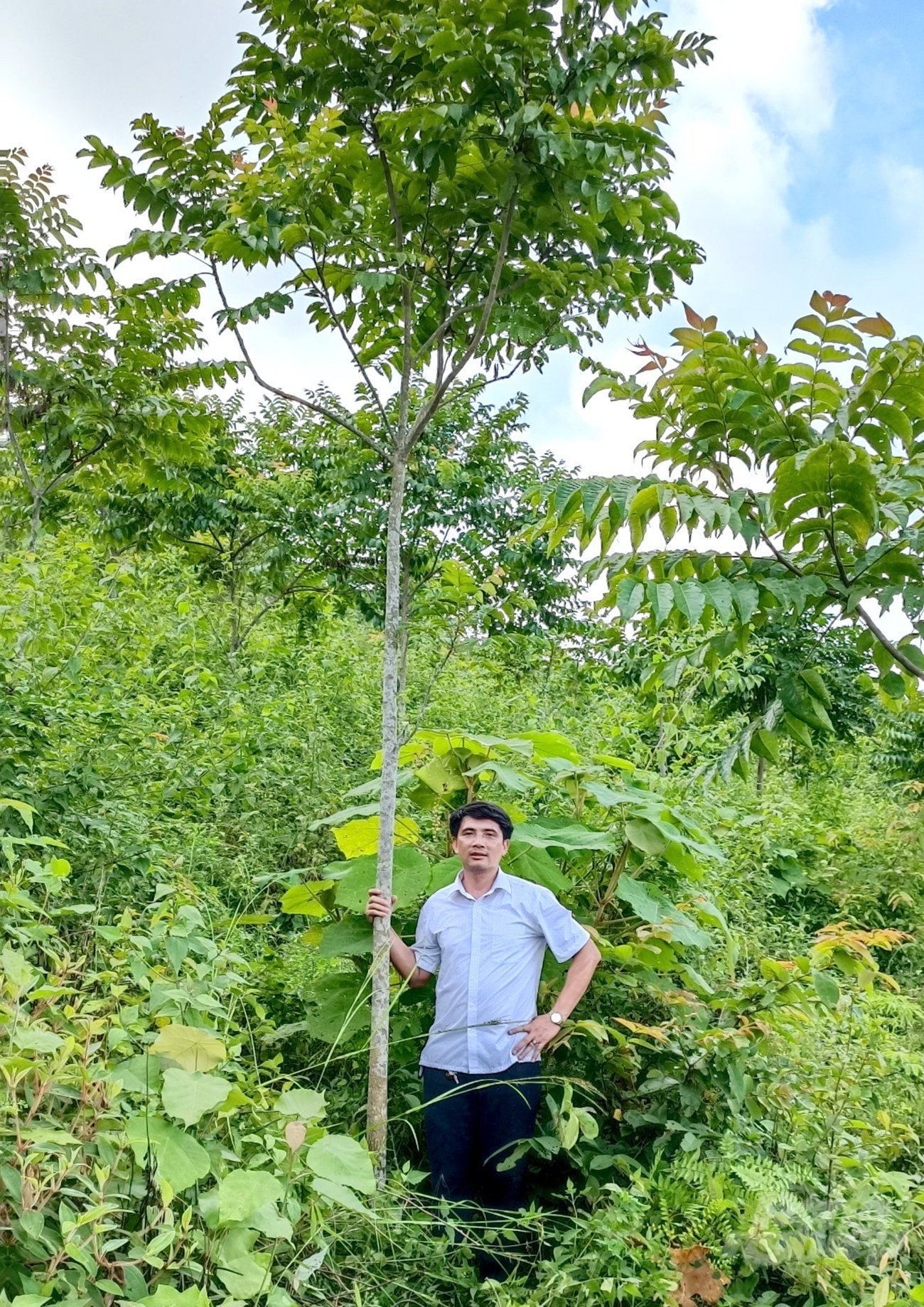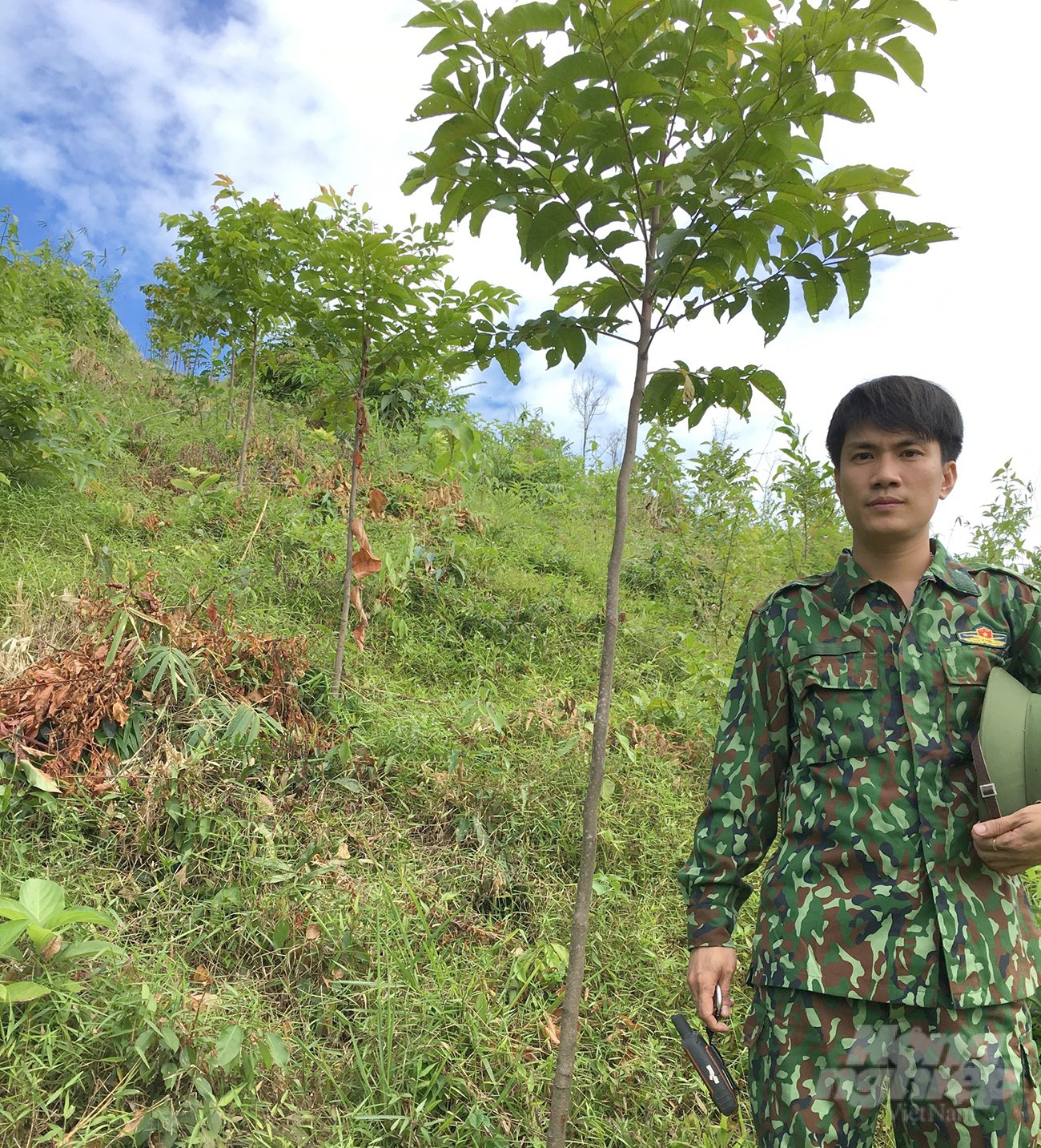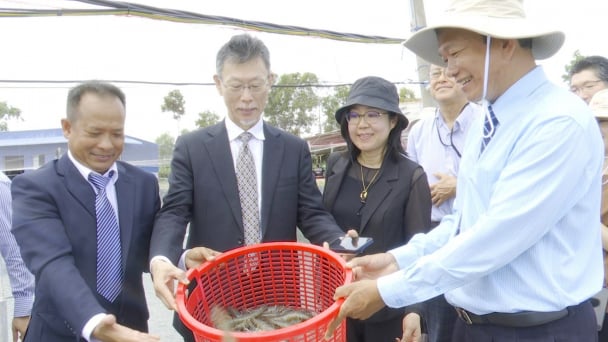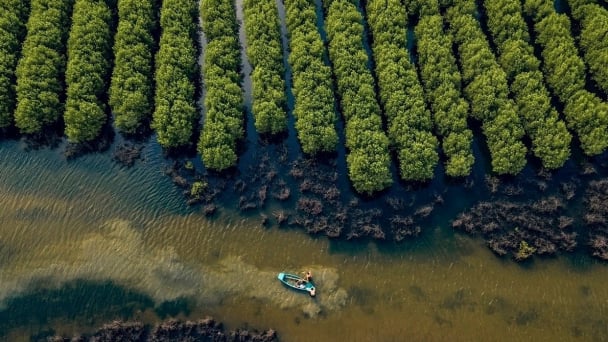June 15, 2025 | 13:42 GMT +7
June 15, 2025 | 13:42 GMT +7
Hotline: 0913.378.918
June 15, 2025 | 13:42 GMT +7
Hotline: 0913.378.918

The process of testing Chukrasia trees in Nghe An province has achieved many promising results. Photo: Viet Khanh.
Chukrasia, also known as "Chukrasia tabularis," is a large timber tree with a straight and round trunk. Chukrasia timber belongs to Group I and holds significant economic value, priced at around 50 million VND per cubic meter. The wood grain of Chukrasia is exceptionally beautiful, featuring fine and smooth fibers. Notably, it is less susceptible to warping and bending, and it is resistant to termites, making it favored for crafting high-end wooden products.
In order to serve the Forestry Restructuring Project, the Ministry of Agriculture and Rural Development had previously issued Decision No. 4961/QD-BNN-TCLN on November 17, 2014, designating Chukrasia as the main tree species for afforestation in four ecological regions: Northwest, Central, Red River Delta, and North Central Coast. According to the forest inventory results of the General Department of Forestry for the period 2012 - 2014, approximately 35,000 hectares of Chukrasia forests were recorded, comprising 20,388 hectares of productive forests and 14,661 hectares of protective forests.
The main obstacle to the development of Chukrasia plantations is the shoot borer, a type of insect that typically infests forests in their first 1 to 3 years of growth. Shoot borers cause top dieback by tunneling into young shoots, creating galleries within the non-woody tops where they take shelter. This leads to the formation of multiple branches, early branch division, and restricted vertical growth, ultimately diminishing the economic value of the timber.
Previous studies have mostly focused on describing morphological characteristics, distribution, origin examination, planting techniques, etc., but there has been a lack of technical guidance on shoot borer control, resistant varieties, and advanced planting techniques to provide large timber.
Addressing these needs, from 2018 to 2022, the Vietnamese Academy of Forest Sciences (under the Ministry of Agriculture and Rural Development) has initiated the research project "Selection and Cultivation Techniques of High-Yield Chukrasia (Chukrasia tabularis A. Juss) with shoot borer resistance for large timber plantations in the Northwest and North Central Coast Regions."

The Vietnamese Academy of Forest Sciences, in collaboration with the Pu Huong Nature Reserve, is implementing the aforementioned project in Nghe An province. Photo: Quoc Toan.
The overarching objective is to select promising varieties that exhibit high productivity and resistance to shoot borers. Concurrently, the project aims to supplement and refine the agroforestry planting techniques and comprehensive shoot borer control methods in order to enhance the productivity and quality of Chukrasia plantations. This is intended to advance the supply of large timber to both the domestic market and export.
In further detail, the focus will be on establishing 14 hectares of agroforestry Chukrasia plantations with growth rates exceeding 15% compared to the general production variety. These plantations are expected to achieve yields of over 12 cubic meters per hectare per year at the age of 7 years, while also reducing the shoot borer infestation rate by at least 80% compared to same-age production forests.
The research project has yielded valuable results, revealing in addition to shoot borers, the presence of three other harmful species: defoliators, leaf-eating caterpillars, and dieback diseases caused by fungi.
Chukrasia is more severely affected by shoot borers at the ages of 1 to 2 years than in later stages of growth. Pure Chukrasia plantations are generally more susceptible to shoot borer damage than mixed plantations with native trees, agroforestry systems, or dispersed planting. If planted in suitable, well-drained soil with proper moisture levels, Chukrasia will exhibit superior growth, healthy tree morphology, and reduced susceptibility to pests and diseases.

Chukrasia belongs to Group I timber, offering very high economic value. Photo: Viet Khanh.
During the research process, the project has successfully selected 116 superior Chukrasia trees and established experimental plots covering 6 hectares in two provinces, Hoa Binh (3 hectares) and Nghe An (3 hectares). The project proposed three effective mechanisms for resisting shoot borers: the non-preference mechanism (short length of young shoots, presence of fine hairs on young shoots and thick bark discouraging young borers from attacking); the antibiosis mechanism (young leaves and shoots containing endogenous bacteria or chemical compounds such as Chuktabularins, Chukvelutilides, Tabulalides, and Tabulalin at high concentrations, deterring borers from feeding); the tolerance mechanism (trees capable of recovering well after shoot borer infestation).
When applying fertilizer formulas based on the plant's specific requirements, it is observed that the growth process surpasses that of other formulas. In Nghe An, the height and diameter of Chukrasia trees using this approach increased by 42.3% compared to the control variety, not to mention the significantly reduced harmful borer rate.
Pure Chukrasia plantations suffer severe shoot borer infestation, with a rate exceeding 50%. However, intercropping with corn and planting bean supports yielded satisfactory results, reducing the shoot borer infestation rate to around 30.6 - 32.2%.
Based on the aforementioned results, the project has developed agroforestry planting techniques for high-value Chukrasia timber, which have been approved by the Scientific Council of the Vietnam Academy of Forest Sciences.
Translated by Nguyen Hai Long
![Turning wind and rain into action: [4] Bringing climate bulletins to remote and isolated areas](https://t.ex-cdn.com/nongnghiepmoitruong.vn/608w/files/linhnhp/2025/06/14/1152-z6704423696987_15fd32ffc26d590d204d520c9dac6786-nongnghiep-151141.jpg)
(VAN) The Vietnam Agriculture and Nature Newspaper interviewed Mr. Vu Thai Truong, Acting Head of Climate Change and Environment at UNDP Vietnam, to gain deeper insight into how climate bulletins are delivered to farmers.

(VAN) In Tien Giang, a high-tech shrimp farm has developed a distinctive energy-saving farming model that has yielded promising results.
![Turning wind and rain into action: [3] 300.000 farmers benefit from agro-climatic bulletins](https://t.ex-cdn.com/nongnghiepmoitruong.vn/608w/files/news/2025/06/12/e5a48259d6a262fc3bb3-nongnghiep-125122.jpg)
(VAN) The agro-climatic bulletin has become a valuable tool for farmers in the Mekong Delta. After more than five years of implementation, the initiative is gradually being expanded nationwide.
![Turning wind and rain into action: [2] Providing forecasts to the people](https://t.ex-cdn.com/nongnghiepmoitruong.vn/608w/files/news/2025/06/12/e5a48259d6a262fc3bb3-nongnghiep-103927.jpg)
(VAN) In addition to improving the quality of hydrometeorological forecasts, putting forecast bulletins into practical use is crucial for production and disaster prevention.

(VAN) Blue carbon is receiving attention for its rapid absorption capacity and vast potential. It represents a promising nature-based solution to respond to climate change.
/2025/06/11/3507-1-161904_583.jpg)
(VAN) Seagrass beds and coral reefs serve as 'cradles' that nurture life in the ocean depths, creating rich aquatic resources in Vietnamese waters.
![Turning wind and rain into action: [1] Forecasting for farmers](https://t.ex-cdn.com/nongnghiepmoitruong.vn/608w/files/news/2025/06/11/e5a48259d6a262fc3bb3-nongnghiep-111919.jpg)
(VAN) Weather is no longer just a matter of fate. Forecasts have now become an essential companion for farmers in every crop season.